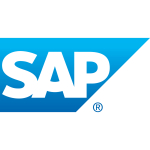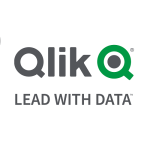What is our primary use case?
Our primary use case is to use it to show all of the analytics for our retail stores and allow the managers to see their store numbers and compare them to the other stores.
And for employee performance, employees can compare themselves to the rest of the country. That was probably my biggest application of it and it's an interesting use case because we manage all of the data in the backend. We are able to get the users to see a very static view of how they are doing compared to the top ten percent of their region, their state, and the top ten in the country. It creates a pretty cool way for employees and store managers to compete, in a healthy way, with the rest of the stores.
How has it helped my organization?
The best improvement is the data availability. For an organization that has over 12,000 users, having data on the cloud for anyone, anytime, to see their live stats is really different. We didn't have that before. That completely changed the way we look at how a store performs and how employees perform.
We had limited visibility into the data previously so I can't tell you that we have seen huge improvements from the data standpoint. But the company really started to focus on performance metrics and, over time, we saw people improve their performance from the time that we got Domo and onward for the next two years. When people started to adopt it, we started to see performance increases, especially in the stores that were more focused on it.
What is most valuable?
The best thing is that the data storage is pretty much free. I can store as much data as I want, from different sources.
The ETL tools they have in Redshift are pretty awesome. They also have them in MySQL, but I find it really easy to gather data from AWS and work with Redshift all the way through the process. I can work in Redshift to get the data from AWS and work in Redshift, in Domo, to create Transforms and the data structure we need for the remainder of the users.
What needs improvement?
They could use more charts. They have had a very limited number of charts we can use. I believe, now, there are somewhere around 30 of them, but they could definitely use some more options.
I would also like to see improvements to their drag and drop Magic ETL tool. You can drag and drop your ETL tool, but it doesn't really work for a large amount of data. It struggles with that. In a real-world application, where you're working with 30 million rows or 100 million rows, it takes a bit longer to process the data. If you do it in the Redshift ETL tool, using your own code, it's much faster.
Buyer's Guide
Domo
November 2025
Learn what your peers think about Domo. Get advice and tips from experienced pros sharing their opinions. Updated: November 2025.
872,846 professionals have used our research since 2012.
For how long have I used the solution?
More than five years.
What do I think about the stability of the solution?
The stability is great. We have been down for maybe a few hours, once or twice, over the four years I've worked with them.
Most of the issues we had were on our side, with our data, rather than with them. That's why I was actually surprised to read other reviews that said that they were having trouble with loading the data or updating the data. I think that may be because of the way they implemented it because I've never had any issues with that.
What do I think about the scalability of the solution?
I have worked with such large businesses with Domo that I think it could scale to any size. We have 12,000 users across the country, 600 stores, and hundreds of gigs of data.
The majority of the users are just looking at their numbers. They're not really doing much analysis or creating their own charts. But about 600 to 1,000 of the users are corporate users who make tables or their own charts or create their own metrics. But most of that runs through me, if they needed data changes.
I'm not sure there's much need for us to grow into it. We have adopted it close to 100 percent of the time. All of our company employees are on it.
How are customer service and support?
I have to give tech support a really good score. They've been great with me. If I have a question, I call them and they answer the phone. They are able to walk me through from the most minimal thing. If I need help with something really complex, something I developed which is customized, they still give me a hand. But ultimately, whatever you build is on you.
I have had to escalate a few things, mostly because I wanted to get them done faster or there was a problem I didn't understand. I just go to my sales rep and he gets it taken care of. He gets someone to call me right away.
Which solution did I use previously and why did I switch?
We had a custom tool. It was proprietary and it wasn't that great. It was mostly scraping the data and pasting into an Excel-style sheet in the website. I wouldn't say it was a business intelligence tool at all. Rather, it just showed you flat numbers for reports.
The CEO brought Domo in. He saw that we were growing and he thought it was an interesting tool. He showed it to us, we sampled it. We used it for a few demos and we decided to go with it because there wasn't anything else that gave you the cloud space without charging you for it. They're really good about that. You can take up as much space as you want for data and they don't charge you for it.
We needed something more versatile than what we had and something that was managed on the cloud that we didn't have to touch too much. They were able to provide that for us.
How was the initial setup?
The initial setup really depends on your native structure and what you have built previously. If you already have a really good understanding of your data setup, and you have flattened your data a bit for it to be absorbed by any other tool, it's going to be really straightforward, really easy. Users are going to be able to take advantage of it really quickly.
If you have to go through the process of flattening out all the data and getting everything correct, the prep work could take a couple of months. They do provide a lot of help from their side, if you have questions or for getting the data in. They provide a lot of hands-on from their team. That was good.
For our deployment, to get it out to the 12,000 users, it took about three to four months.
We didn't have an implementation strategy at first. About a month into it, we got a new CIO and he implemented a strategy for us to get it done. A lot of it was guided, before that, by our CEO. He wasn't necessarily great in that area; he was more of a finance guy. Domo also helped a lot, getting us onboard and running as soon as possible.
It was hands-on for me. I had to do a lot of collecting of ideas and what they actually needed. I had to do a little bit of the project management myself, as well. I had to do some pulling of strings everywhere to collect everything that they really needed so we could translate it to what the user needed to see. Half the time I was developing, the other half I was chasing down what exactly was needed.
What about the implementation team?
I was the main developer. We used Big Squid Consulting as extra resources, but I guided most of the actual developmental work.
The Big Squid guys are really good. They provided two consultants and I was able to offload a lot of the work, where I needed help. They took care of a lot of code that, otherwise, I wouldn't have been able to put my hands on as fast.
The deployment was done by the three of us. I worked on it 40 hours a week for three months, and we had each of the other two guys for about five to ten hours a week.
What was our ROI?
We have seen ROI on the retail side. It brought an openness to the associates who are trying to sell at the storefront. It made them compete a bit harder, being able to see what their commissions were on the fly, live. That really returned most of the investment. I would say within six months of having it implemented it returned its full value.
What's my experience with pricing, setup cost, and licensing?
Domo is expensive compared to some of its competitors but it is well worth it, mostly because the competitors either want you to store the data yourself, or they have similar pricing that isn't really worth it when you compare some of the features that Domo gives you.
Which other solutions did I evaluate?
We looked at Power BI, but there really weren't any others that gave us the deal that we got on the amount of data we could store and the support that we needed at the time. When we made the decision, Domo was fresh into the market, and there weren't really many competitors. Looker wasn't around. QlikView was around, but they came in a little late to try to get our business. We had already made our decision.
What other advice do I have?
Don't complicate it. At first we thought it was going to be a lot more complicated. It just wasn't. Knowing that, next time, would help me a lot, instead of trying to plan so much for every detail. It was a lot easier than I expected and we spent a lot of time testing stuff and figuring out if the tool was updating. If we had trusted what they were saying, we would have finished a lot faster.
If you don't have a lot of data changing, if your structures are not changing - some companies keep changing the way they structure their data and that will take a lot of time - maintenance isn't that bad. I spend about ten hours a week on maintenance of the solution, and we are running a really big implementation. It's mostly answering user questions. There haven't really been any problems. I am able to work on that and on other projects at the same time. I am able to maintain it with very minimal work.
Overall, I'd give it an eight out ten. From easy usability to documentation to pricing, it's pretty much all there.
Disclosure: My company does not have a business relationship with this vendor other than being a customer.













